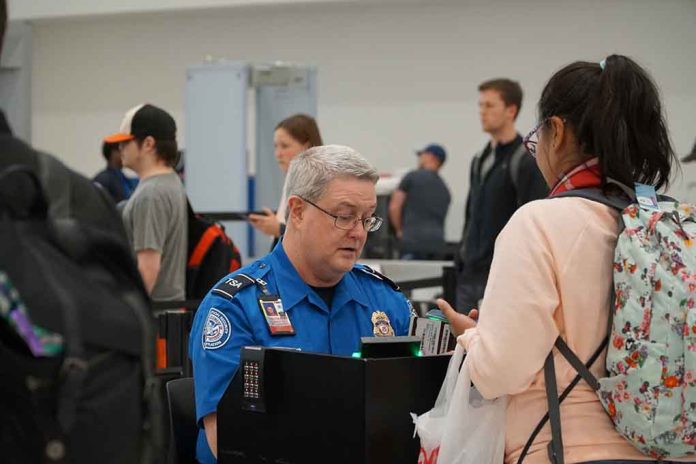
French officials slashed Paris-Orly airport flights by 40% following a catastrophic air traffic control system failure, stranding thousands of passengers and exposing yet another critical infrastructure vulnerability under lax European security protocols.
Key Takeaways
- France’s civil aviation authority ordered Paris-Orly airport to reduce flights by 40% due to a major air traffic control system malfunction
- Approximately 130 flights were canceled on Sunday alone, with disruptions continuing into Monday with a 15% flight reduction
- Thousands of passengers were stranded, including many who were already seated on aircraft when their flights were abruptly canceled
- The breakdown affected flights to numerous European destinations and North African countries, revealing serious vulnerabilities in European air traffic infrastructure
- Paris-Orly, which handles 33 million passengers annually, became a scene of chaos as travelers scrambled to find limited and expensive alternative transportation
System Failure Paralyzes Major European Hub
A critical breakdown in air traffic control systems at Paris-Orly airport forced French officials to slash flight capacity by 40%, creating a ripple effect of cancellations and delays across Europe and North Africa. The French civil aviation authority (DGAC) issued the emergency reduction Sunday evening as controllers scrambled to maintain safety with compromised systems. While officials have been vague about the specific cause, an airport source cited a “radar failure” as the culprit. The technical collapse demonstrates the fragility of supposedly advanced European infrastructure and raises questions about maintenance priorities in French transportation systems.
The breakdown’s impact was immediate and severe, with approximately 130 flights canceled on Sunday alone. Destinations across Europe were affected, including Spain, Denmark, Italy, Germany, Austria, the Netherlands, and Ireland, as well as flights to Saudi Arabia and numerous French cities. DGAC officials announced the chaos would continue into Monday with a reduced but still significant 15% cut in flight schedules, extending the travel nightmare for thousands. The dysfunction at Orly, which handles about 33 million passengers annually (roughly half the traffic of Paris Charles de Gaulle), underscores the outsized consequences when critical systems fail.
Paris ORLY faces flight disruptions due to traffic control outage
The failure of an air traffic control system caused major
disruption at the Paris Orly airport.
The outage, which began early in the afternoon, caused strict
restrictions in traffic and a major reduction in…
— Stare Decisis (@MsResJudicata) May 18, 2025
Passengers Left Stranded and Scrambling
The human toll of the system failure was immediately evident as thousands of travelers found themselves stranded with few options. Many passengers experienced the particularly cruel scenario of boarding their aircraft only to be forced to deplane after settling in. “We were in the aircraft, all seated and strapped in, ready to go, when they made us disembark and collect our bags… then began the ordeal,” said Azgal Abichou, one of many travelers caught in the chaos at the airport.
“The only option is a 300 euro flight – and there’s only one seat left, but there are two of us and we are not even sure it will take off,” said Romane Penault, highlighting the limited and expensive alternatives available to stranded passengers.
Long queues formed throughout the terminal as frustrated travelers sought information and alternatives. With limited hotel availability and scarce replacement flights, many were forced to spend uncomfortable nights at the airport. The situation highlighted the inadequate contingency planning at one of Europe’s significant transportation hubs. While European governments spend billions on progressive social programs, basic infrastructure vulnerabilities like this continue to disrupt critical transportation systems and leave citizens stranded.
Officials Scramble for Repairs While Providing Little Information
The French civil aviation authority has been notably tight-lipped about the specific nature of the failure. Their public statements have acknowledged the need for “regulation” but failed to clearly identify the root cause or provide a transparent timeline for repairs. “The situation is improving but still requires traffic regulation,” DGAC stated vaguely, providing little comfort to affected travelers. This lack of transparency raises questions about whether more significant issues might be at play.
“[We] are fully mobilized to restore normal operations as soon as possible,” claimed DGAC officials as repair teams worked to fix the unspecified system failure.
The breakdown at Paris-Orly serves as yet another example of infrastructure vulnerability in Europe, where aging systems frequently face technical failures despite the region’s reputation for modernity. While billions are directed toward progressive political agendas, basic infrastructure maintenance appears neglected. As Paris prepares to host the Summer Olympics in just a few months, this major transportation disruption raises legitimate concerns about the city’s readiness to handle the massive influx of international visitors and the strain that will place on its already fragile systems.














